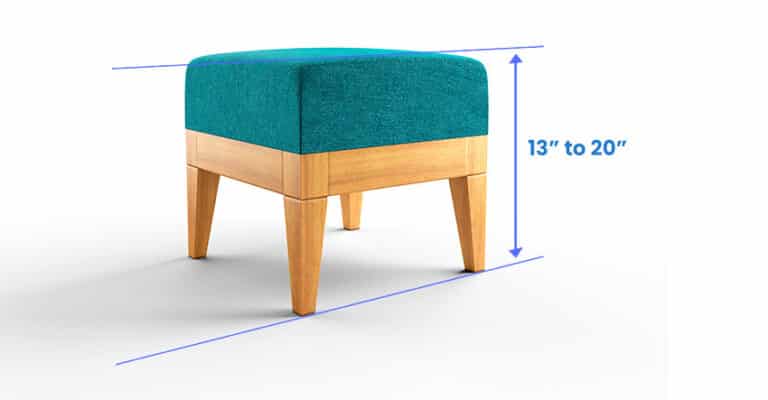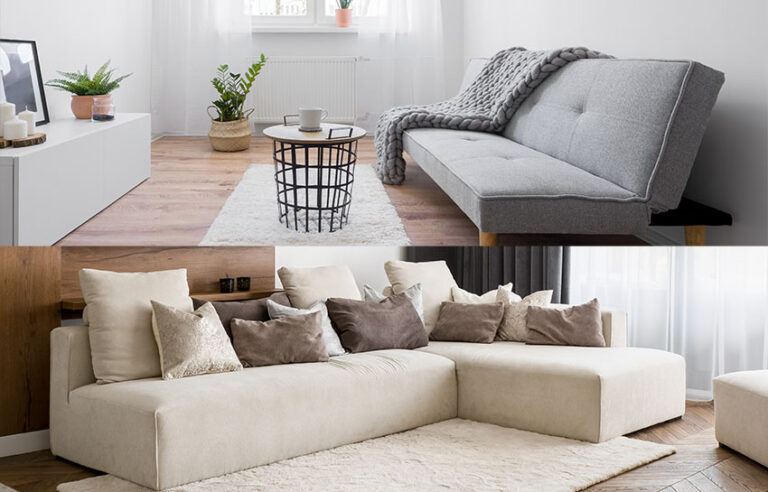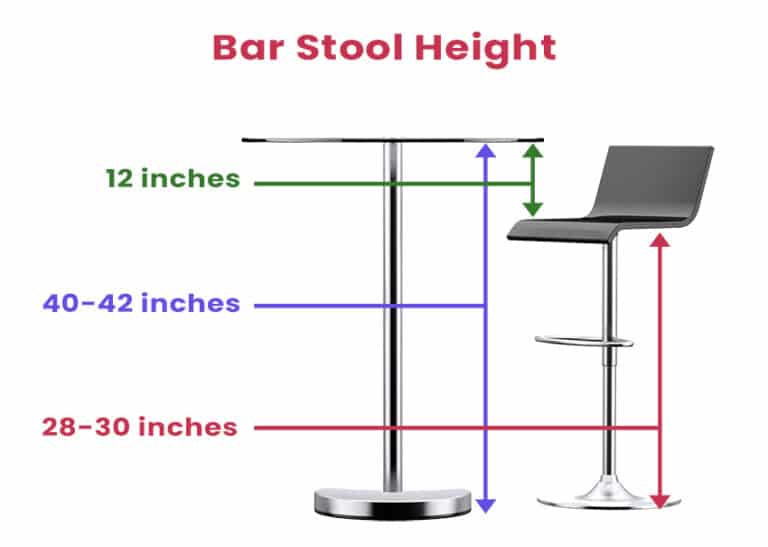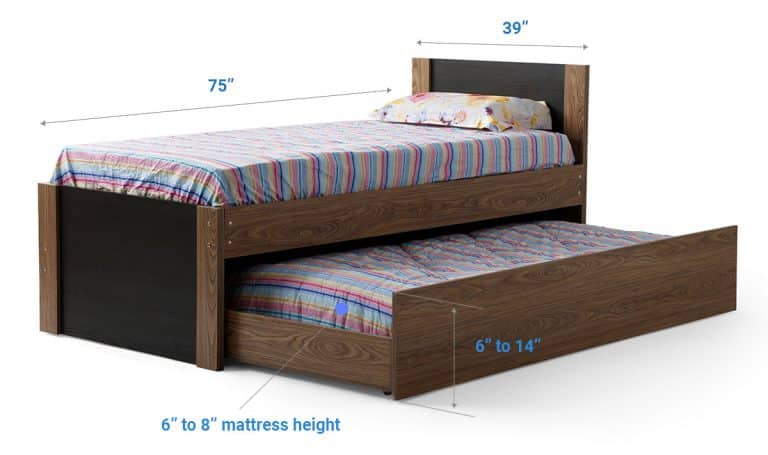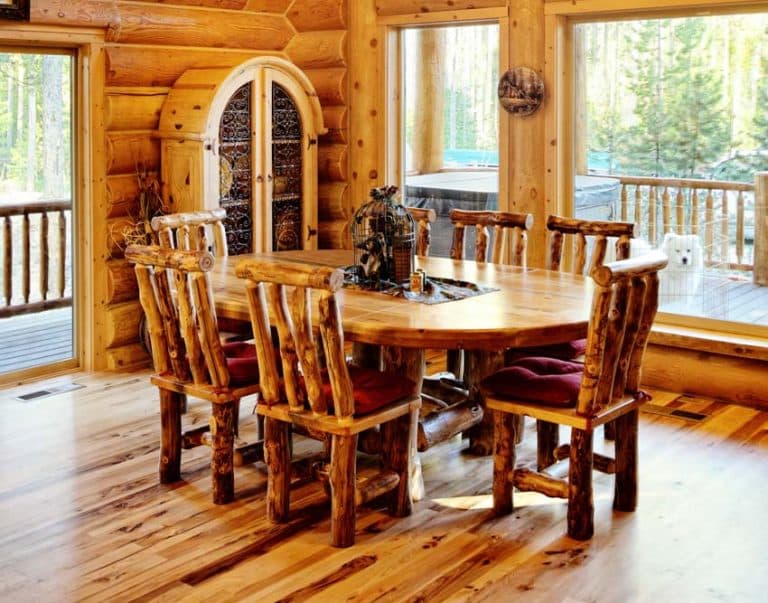Acacia Wood Vs Teak (Pros and Cons & Comparison)
Are you in search of an authentic hardwood for your flooring and furniture? There are many options to consider and two of the most popular ones in terms of durability are acacia and teak wood.
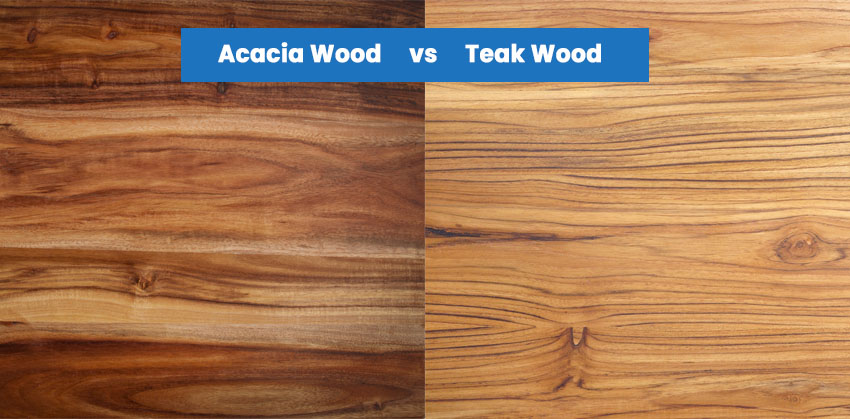
These two types of wood have proven themselves compatible with woodwork, whether to create a magnificent cabinet or a discreet side table for your bedroom. And to decide which one to use, identifying their differences is a good place to start.
Acacia is endemic in the Indian subcontinent (except in the northern and northeastern regions) and other countries like Burma, Egypt, Saudi Arabia, Sri Lanka, Tropical Africa, and East and West Sudan. Teak, on the other hand, is endemic primarily in Burma but also grows in African and Southeast Asian countries.
Both types of wood are known for their high density, making them strong and suitable for various products in the world of woodworking.
Having these two kinds of wood compete and be differentiated against each other provides an opportunity to explore alternative options for furniture, flooring, and other products.
Understanding the differences between the two options allows for better-informed decisions in selecting the right one for your needs, taking factors such as resistance to termites, surface care, and overall appearance into account.
Comparison of Acacia Vs. Teak
Here is a summary of the differences between acacia and teak based on specific factors and elements.
| Characteristics | Acacia | Teak |
| Availability |
Widely available | Extremely scarce and rare – Controlled by the government |
| Oil Content | Lower than teaks | With rich inherent oils |
| Grain Pattern | Either wavy or straight (Striking pattern) | Tight straight grains (Subtle pattern) |
| Color | Reddish-brown heartwood
Pale sapwood |
Slight yellow heartwood that turns darker (dark yellow and brown) as it matures |
| Durability | Durable enough | More durable |
| Finish | Requires finish to protect the surface |
Does not need a finish and has its own natural oil for protection |
| Workability |
Difficult to work with | Easy to work with |
| Price | More affordable than teaks | Expensive |
| Smell | Smells once cut | Exudes pungent smell |
The thing with acacia and teak wood though is that despite their differences in appearance and even smell, one is passed off as the other.
Some try to sell and pass off acacia wood as teak simply because the latter is much more expensive and considered more resistant to termites. This is the reason why knowing the difference between the two will help prevent you from getting cheated when looking for genuine teak products.
Floors made from both woods are popular choices, valued for their strong and durable qualities. Each type offers unique characteristics that set them apart.
If you want to know more about these two types, exploring their strengths and weaknesses is also a good step to take. Focus on factors that will affect your experience in using them as a piece of furniture or material, including hardness, durability, maintenance, and cost.
Acacia Wood Pros And Cons
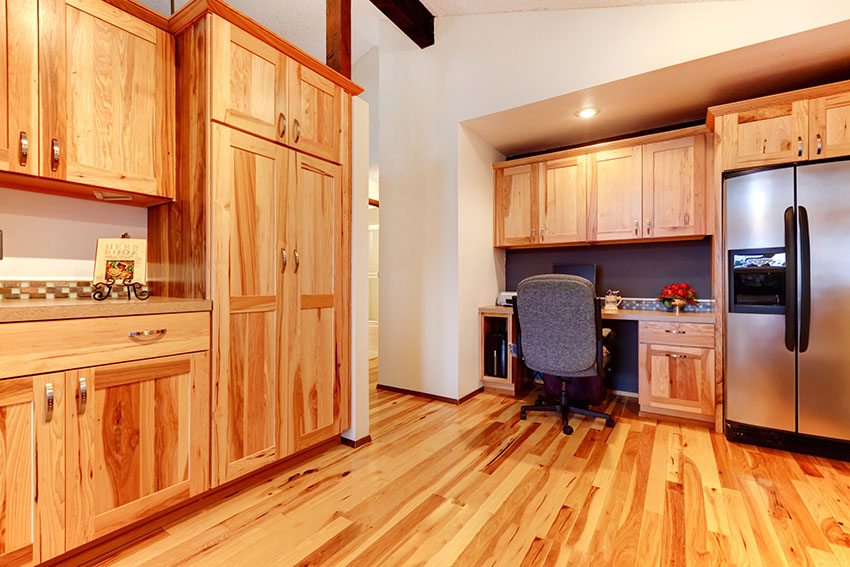
Acacia trees are known for their bushy look and mainly grow in tropical countries worldwide with various species and varieties worth knowing about, including British acacia koa, flax-leaf wattle, and creeping wattle.
It has been part of history and was exported from the Indian subcontinent by the British Royal Navy. This in itself is proof of the wood’s value and usefulness that it’s even shipped just to be used for shipbuilding.
When it comes to appearance, acacia is known for its reddish-brown hardwood and stunning grain patterns. It is a good option if you’re going for a farmhouse or rustic style.
Its curved grains and reddish-brown hues that won’t fade with time are a stunning combination to look at. It is also an eco-friendly option since the tree is widely available and not endangered, unlike teak.
Acacia Pros:
Here are a couple of benefits of this wood.
Acacia Hardness – Acacia wood has a Janka hardness rating of 2,300 lbs on average and a range of 1100 to 4070, depending on the variety and species of the tree chosen. It is one of the densest and heaviest woods, generally weighing around 700 kg/m3.
Despite being considered one of the hardest though, it is still easy to work with and lighter in weight compared to teak’s. It will require special tools similar to most hardwood options but its lumber sands and cuts well, making it easier to work with.
Durability – Acacia is a highly durable hardwood option despite being a little less durable compared to the other option. It also showcases the following characteristics:
- Weather-resistant
- Repels moisture
- Pest-resistant
- Moderately rot-resistant
- Relatively scratch-resistant
The major drawback is it can be affected by water, humidity, and heat. The wood has the tendency to soften when exposed to sunlight directly and it can shrink when exposed to moisture. Care should be taken to maintain your acacia-wood products, keeping them away from direct sunlight and excessive moisture.
Make sure to avoid installing your acacia furniture in high-humid places and locations that can expose them to elements such as indoor insects. This beautiful material, with its array of colors, is perfect for items like countertops and other products if the right precautions are taken.
Acacia Wood Cons:
Here are a couple of the disadvantages of acacia.
Maintenance – Choosing acacia means that you are selecting a type of hardwood that may be difficult to maintain. Applying a finish is a requirement to protect the wood and you will need to re-finish it regularly. This is especially important if your choice of wood items is susceptible to insects or moisture.
This is highly vital since its surfaces are only relatively scratch-resistant and actually prone to denting and damage. But if you want it to last long, regular maintenance is a must.
Cost – Acacia is an expensive hardwood option but if you compare it with teak’s then it’s definitely more affordable and much cheaper. It can cost $10 per board foot but this price may be affected by the specific species you’ve chosen, the time of the year, and your location.
Is Acacia Good For Outdoors

If you’re considering acacia wood for something outdoors, make sure you take the necessary precautions to protect it (which is why most would prefer to use this indoors). Being susceptible to sunlight and moisture, leaving it bare out in the open is a big mistake.
Keep your furniture away from direct sunlight and possible moisture exposure. If you can’t help these situations, make sure to cover it up when not needed or used. Visit our acacia wood outdoor furniture pros and cons guide here.
Teak Wood Pros And Cons
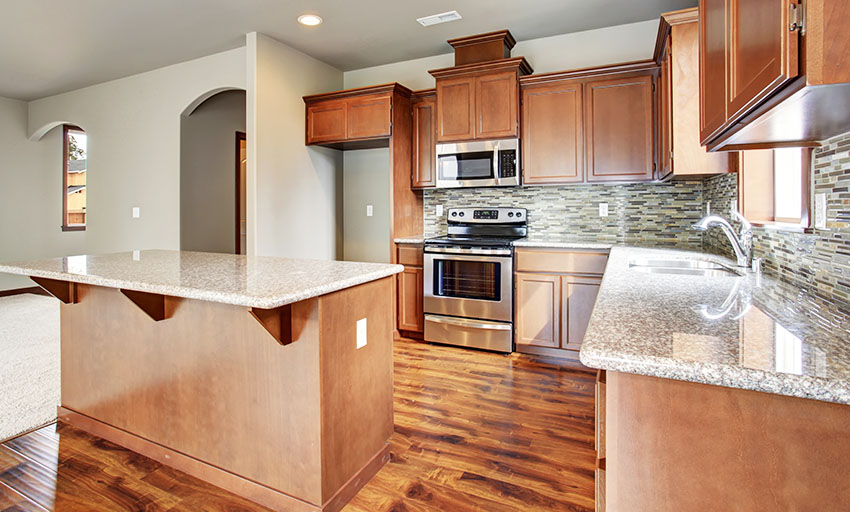
Teak is a rare hardwood option that’s even considered endangered, which is why its availability and distribution are being controlled by the Burmese government. These trees can grow up to more than 130 feet tall and live for over a hundred years.
There are some species of teak that you can find in the U.S., including Brazilian, Indonesian, and Thai. Visit our guide to the types of teak wood here for more details.
Aesthetically, teak is highly regarded for its stunning straight-grain patterns and rich light brown hue that naturally fades to chocolate brown with time. This rich color adds warmth and elegance to the furniture, countertops and cupboards, and the room in general.
Teak Wood Pros:
Here are some of the advantages of using teakwood.
Teak Hardness – The wood is guaranteed to be hard and dense, with its rating on the Janka hardness scale falling on 2,330, and can go as high as over 3000 lbf like the Brazilian teak which has a rating of 3,450 lbf.
Teak is also considerably heavy, weighing around 980 kg/m3 for the African variety. This heavyweight and impressive hardness make this hardwood a bit difficult to work with compared to other options.
Durability – It is a highly durable and long-lasting material to consider that when left untreated can last up to 30 years. When properly treated and maintained though, it can last up to 50 to 70 years.
Since the wood produces its own natural oil, it has better protection against other elements and won’t even require the application of a top coat or finish.
It also offers the following characteristics as part of its durability: timber quality, water resistance, thoughtful design, the ability to absorb stain, moisture resistance, unique texture, versatile decor options, and compatibility with a range of styles and tables. These features enhance the beauty of teak furniture and structures.
It also offers the following characteristics as part of its durability:
- Weather-resistant
- Moisture-repellent
- Highly decay and rot-resistant
- Highly resistant to pests
These incredible characteristics are mostly because of the natural oils that the teak tree produces. This is one of the major differences and an advantage it has over the alternative.
Maintenance – With teak, maintenance is not as rigorous and regular as acacia. Compared to it, teak doesn’t require top coating and finish since the natural oils it produces are enough protection.
While it may be used without treatment, applying a finish can considerably lengthen its lifespan and preserve its texture and beauty.
Teak Wood Cons:
Here are some drawbacks of using teakwood.
Allergy Sensitivity – In some instances some are sensitive to being near it. Some of the reactions include skin, eye, and respiratory irritation.
Cost – Both of these types of woods are expensive hardwood options but teak is more expensive because it is not as readily available as acacia. It is also quite heavy, making it more difficult to handle and ship and so more costly in the process.
While acacia can cost $10 per board foot, teak lumber costs $50 per board foot and this would even depend on the availability since the wood is rare.
Is Teak Good For Outdoors
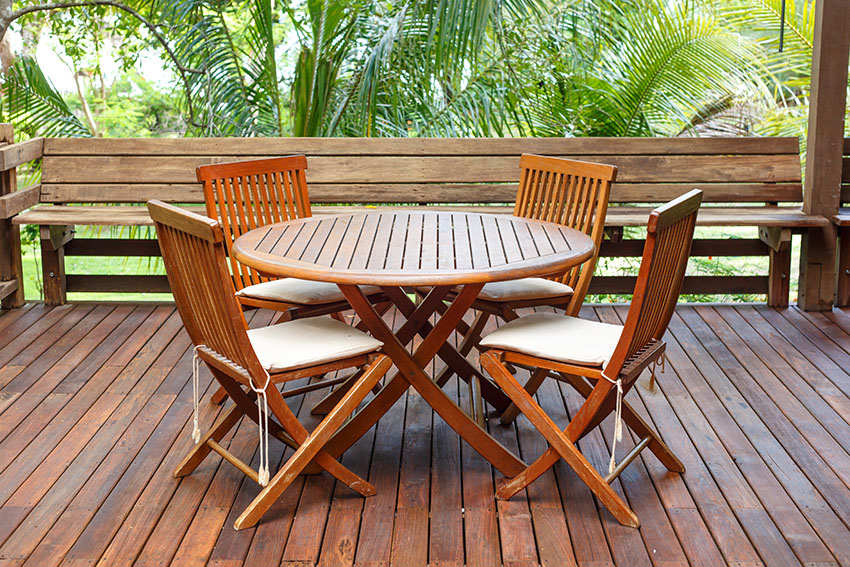
Teak wood is a good consideration for outdoor usage, whether it’s a piece of furniture or the construction of a structure. Since the wood produces its own rich natural oils, protection from weather elements is guaranteed.
When considering the durability, it does not soften with sunlight exposure nor is it in danger from moisture damage and rotting. Because of these factors, this hardwood option can easily be used outdoors without worrying about wasting the investment you have in it.
In fact, teak patio furniture is more popular than pieces of furniture indoors. Visit our guide to teak wood outdoor furniture here.
Acacia Wood Vs Teak Outdoor Furniture
Acacia and teak are two hardwoods that take pride in their hardness and durability. If you’re considering them for an outdoor piece of furniture though, you might prefer going for teak than acacia.
Compared to acacia which softens with sunlight exposure, teak wood does not suffer from the same issue. It also has a better handle on moisture exposure and is highly resistant to rotting. This means that it can withstand outdoor elements better.
If you have a limited budget and you’re not confident you can afford teak, acacia furniture can still be considered. Make sure that you treat the wood before exposing it to weather elements and that you cover the piece of furniture when not in use to provide extra protection.
Re-applying the finish on the surface regularly and cleaning spills as soon as they happen can also help maintain its quality and even lengthen its lifespan.
What is your favorite when it comes to acacia wood vs teak? Let us know below in the comments. Visit our guide to cork vs bamboo flooring for more related ideas and options.

